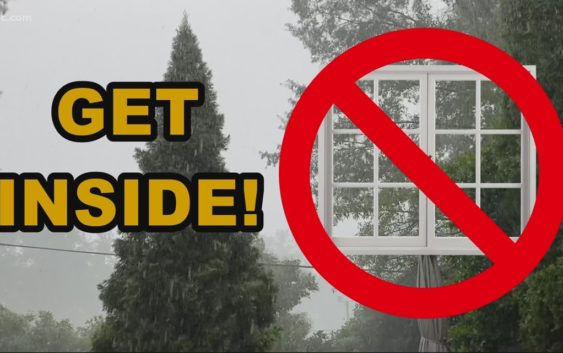- Former San Antonio Spur Kawhi Leonard's home likely destroyed in California wildfires
- More evacuations ordered as another wildfire breaks out in LA
- Calmer winds aid firefighters in Los Angeles as scope of devastation from wildfires comes into focus
- NBA postpones game between Lakers and Hornets due to wildfires in Los Angeles area
- The Los Angeles landmarks from film and TV damaged by wildfires
The dangers of hail: Severe Weather Preparedness Week:

Hail is responsible for billions of dollars in damage across the United States and will be seen this severe weather season. Facts you should know.
CHARLOTTE, N.C. — Hail is an insurance claim waiting to happen. Every year across the US there are on average 5,000 major hail events.
Last year we had 4,611 and in 2019 we saw 5,396 major events. Most of it falls here in hail alley.
Once a hailstone reaches up to 1” in diameter or a quarter size it will start to cause damage to a car and even siding on a house. At this size, a severe thunderstorm warning will be triggered.
Hail causes over 1 billion dollars in crop damage every year. But it doesn’t take a quarter to cause damage to crops or plants. A nickel and penny size can be a menace for leaves.
How hail forms
Hail starts up here where this freezing line is in the middle of the storm. As a thunderstorm grows, its updraft drives, it gets stronger and can support larger and larger hailstones. It grows as a water droplet freezes and connects with more supercooled droplets. If you were to cut a larger hailstone in half, it would like the inside of a tree or onion. A hailstone will dance in this zone until the updraft can’t support it any longer and then it will fall.
Most of the hail we see here locally will be pea-size or a ¼”. So when we reference hail we will always compare it to everyday objects. When a hailstone is about baseball size or 2.75”, it can fall to the ground at 100 mph.
The world record hailstone fell in Vivian South Dakota back in 2010 and was roughly the size of a volleyball or 8 Inches across.
North and South Carolina have the same record hail size at 4.5”… which is almost the diameter of a CD.
Large hail can also be a precursor to a tornado. Listen to the sounds of hail hitting this TV station in the background before they have to seek shelter.
So when a hailstorm is overhead get inside and stay away from windows because hail can blow sideways. Hail is rarely deadly but on average injures 24 people per year across the United States.